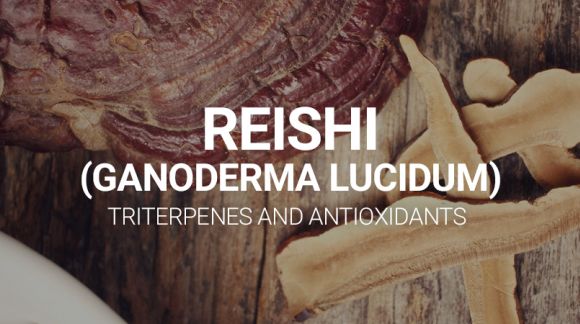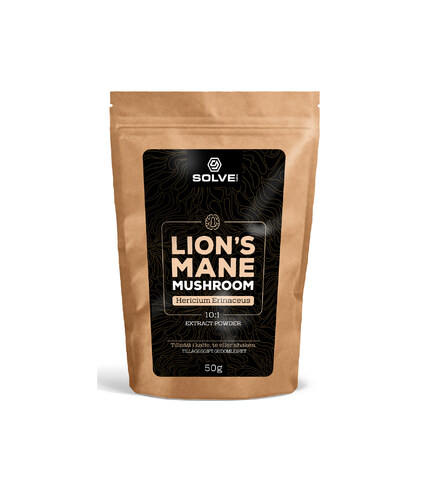Cordyceps sinensis - history, pro-health and efficiency in athletes

We have created this article with the intention of introducing you to the history and properties of Cordyceps mushrooms. Cordyceps, present for thousands of years in the system of traditional Chinese medicine, it stimulates the immune system, has an anti-cancer effect, increases the amount of ATP (cellular energy), reduces the amount of lactic acid, responsible for post-workout pain in the muscles, and increases insulin sensitivity, which allows access to more energy during training, and in the long term it lowers the risk of diabetes.
Cordyceps is a family of fungi growing in the Asian hills. Mainly found in Tibet, Nepal, Thailand and China, where the culture of their consumption for several thousand years has grown into traditional Chinese medicine. It is due to the incredible pharmacological properties of this fungus. The ancient Chinese credited it for anti-aging, improving physical condition, increasing vitality, a positive effect on libido and potency. They believed that it healed the heart, liver, kidneys and, above all, the lungs. They were convinced that the lungs were the main area of action of the Cordyceps consumed. The reason for this was probably the improvement in function, which was caused by its consumption. In addition, according to the professor of social medicine at Harvard University, Ted Kaptchuk, author of the book "The Web That Has No Weaver: Understanding Chinese Medicine " - the Qi energy present in Chinese philosophy, associated with the vital forces, according to Chinese beliefs had its place in the lungs. They called the process of conscious breathing "Qi grasping", and the universal effect of the Cordyceps fungus on human condition and vitality had to be related to this energy, and thus to the lungs. 1
1.History and Functioning in Nature
The Chinese showed remarkable intuition assigning to Cordyceps such a comprehensive action. Today, after years of research, we include it in the class of adaptogenic substances, i.e. plants and fungi whose comprehensive effecton the human body helps to adapt to demanding and constantly changing external conditions. This effectis always multidimensional and holistic, because first of all, it must protect against negative environmental stimuli, such as free radicals, viral or bacteria that can cause disease. Secondly, it must act not only on the physiological level, but also on the mental level, e.g. ensuring resistance to stress. Thirdly - its action must not only consist in defense against pathogens, but also support the body's resources, positively affect executive, cognitive or performance functions, to ensure the optimization of adaptation to environmental conditions. And fourthly, its action must not be distinctive or ad hoc, but must cover the entire relationship with the environment and have a long-lasting effect, as well as not causing any side effects and providing protection without disturbing the biochemical balance of the body. Cordyceps meets all these requirements, and its unusualness is not limited only to the beneficial effects on the human body. Equally amazing is how this fungus functions in the natural world.
Cordyceps grows on mountain slopes in summer, while in winter it reveals its parasitic nature. After locating its spores in the bodies of insects or other fungi, it hibernates in their organisms, growing into new tissues and taking over their bodies as fertilizer for their pericarps. It is unusual to observe the growth of a strong, finger-sized fungus stem from an insect abdomen taken over by the mycelium. This process is a spectacle of the natural world and shows the extraordinary intelligence of Cordycesps as a species.
Such a complicated process of fungus reproduction was the reason for its low availability, which, combined with its medicinal properties, resulted in the exorbitantly high price of Cordyceps. In ancient China, only the imperial family could afford to use it in their daily diet. Fortunately, today we know the methods of growing Cordyceps using biotechnology, while maintaining the natural composition. We have access to scientific research verifying beliefs about the diet, but most of all we have access to such exotic and beneficial fruis of nature as fungi growing in Asia.
Cordyceps' beneficial influence on the human body is all-encompasing. The conclusions of dozens of scientific articles published annually indicate newer and newer applications of Cordyceps or Cordyceps extract is used as a dietary supplement. The latest research directions focus, int. al. on on the study of polysaccharides contained in Cordyceps and their ability to stimulate the immune system2, show the anti-cancer effect of cordycepine contained in this fungus3 and prove a positive effect on the body's efficiency.4 The complexity of the action of this fungus is described in many books 5,6 probably none of them exhaust the topic, as well as scientific review articles.7 Among this wealth of information, let us focus on the stimulating properties of Cordyceps. The side of its adaptogenic properties that responds to the needs of a highly active lifestyle.
2.ATP Production and Efficiency Increase.
Caffeine, Adrenal Glands, and Cordyceps
The times in which we live are a field for adaptogenic substances. Although, as first-world residents, we live with constant access to basic life needs, we pay for it with a lifestyle that exposes us to dozens of pathogenic stimuli every day. Constant overload, rush, lack of rest, work under pressure - are a common cause of stress, disturbing the mental and physiological balance of the body. Culturally accepted forms of coping with fatigue have many side effects. One of the most discouraging ones is addiction. Coffee, or the so-called Energy drinks containing large doses of caffeine are a common choice when confronted with a lack of energy and work overload.While little amounts of caffeine are perhaps harmless8, large doses, especially when combined with sugar and other additives, can cause caffeine toxicity or other side effects.9 Caffeine does not provide significant energy to the body - it temporarily squeezes adrenaline from the adrenal glands and in the long run of regular use can only weaken and addict the body. A much better way to obtain vital energy is to include Cordyceps in your diet, which works at the cellular level - literally charging our biological batteries.
The role of ATP molecules and mitochondria
To understand the fundamental level of Cordyceps sinensis on efficiency and energy growth, it is worth recalling the role of ATP molecules in biological organisms.ATP molecules store energy in chemical bonds similar to the way batteries store energy when charged. Energy is released when the ATP molecule is broken down. ATP is a biological energy currency, warehouse and transporter rolled into one. Every activity, from movement to speech, is dependent on the energy stored in this high-energy bond. ATP is synthesized in cellular mitochondria - organelles that burn fuel provided by the digestive system for energy. The mitochondrion is the "cell's energy center" that generates about 90% of the energy we use in everyday life. The equation is simple - the more ATP there is in a cell, the more energy it will release. Unfortunately, the effectiveness of the ATP synthesis process in mitochondria decreases with age.10 Loss of energy is one of the symptoms of aging, but by consciously controlling the diet, for example by including Cordyceps mushrooms, this loss can be prevented. The increased amount of ATP in cells is of particular importance in muscle tissues - it increases efficiency and resistance to physical effort. Studies on mice have shown that Cordyceps in the diet increases ATP production by almost 18.4 %.11,12 This causes a directly proportional increase in the body's capabilities, both during intense training and in everyday life. Research found that Cordyceps-treated mice exposed to extreme swimming effort were able to perform it 88% longer. 13,14
An extremely important property of Cordyceps in adapting to increased effort is its ability to reduce the accumulation of lactic acid in the muscles.14 Lactic acid is a substance produced by muscles during very intense exercise - it is produced when we burn glucose without the right amount of oxygen. It is responsible for the pains felt after a hard workout, the so-called muscle sores. Human double-blind studies have shown that dietary Cordyceps raises the threshold for lactic acid production by 10%.15 This affects the increased resistance to extreme effort and faster body regeneration.
Another way Cordyceps increases the level of available energy is by increasing insulin sensitivity.16 The more sensitive cells are to insulin, the faster and more fully they take up sugar from the blood. This has the short-term effect of allowing cells to access more energy, significantly improving training performance, and the long-term effect is to lower the risk of diabetes, heart disease and other chronic diseases.
The results of these and many other studies convince Westerners of something that has been known to Asian cultures for several thousand years - Cordyceps significantly improves vitality. In addition, it stimulates the immune system, has anti-cancer properties, improves efficiency and literally increases energy by influencing the production of ATP. Research continues to discover the beneficial potential of Cordyceps, and Nature once again proves to be not only a source of answers to human health problems, but also a help in adapting to an ever faster and more demanding world. Maybe it was due to the deep bond with Nature, the Eastern cultures had access to this knowledge for some reason long before the Western culture created research laboratories that could verify this knowledge?
Bibliography:
1. Kaptchuk T., The Web That Has No Weaver: Understanding Chinese Medicine, 2014.
2. Bi S., Jing Y., Structural elucidation and immunostimulatory activity of a new polysaccharide from Cordyceps militaris, Food and function, 2017.
3. Wada T., Identification of a novel component leading to anti-tumor activity besides the major ingredient cordycepin in Cordyceps militaris extract, Journal of Chromatotherapy B, 2017.
4. Hirsch K. R., i in., Cordyceps militaris Improves Tolerance to High-Intensity Exercise After Acute and Chronic Supplementation, Journal od Dietary Supplements, 2017.
5. Halpern, Cordyceps: China's Healing Mushroom , 1999.
6. Stamets P., Mycelium Running, 2005.
7. Holliday J., Medicinal Value of the Caterpillar Fungi Species of the Genus Cordyceps (Fr.) Link (Ascomycetes). A Review, International Journal of medical mashrooms, 2008.
8. Heckman MA, Weil J, Gonzalez de Mejia E. Caffeine (1, 3, 7-trimethylxanthine) in foods: a comprehensive review on consumption, functionality, safety, and regulatory matters. J Food Sci. 2010 Apr;75(3):R77-87.
9. Wolk BJ, Ganetsky M, Babu KM. Toxicity of energy drinks. Curr Opin Pediatr. 2012 Apr;24(2):243-51.
10. Hwang AB, Jeong DE, Lee SJ. Mitochondria and organismal longevity. Curr Genomics. 2012 Nov;13(7):519-32.
11. Bi S., Jing Y, Zhou Q, Hu X. i in, Structural elucidation and immunostimulatory activity of a new polysaccharide from Cordyceps militaris, Food & Function, 2017.
12. Manabe N, Sugimoto M, Azuma Y, et al. Effects of the mycelial extract of cultured Cordyceps sinensis on in vivo hepatic energy metabolism in the mouse. Jpn J Pharmacol. 1996 Jan;70(1):85-8.
10. JIA-SHI ZHU, M.D., GEORGES M. HALPHRN, M.D., KENNETH JONES, The Scientific Rediscovery of an Ancient Chinese Herbal Medicine: Cordyceps sinensis Parti, THE JOURNAL OF ALTERNATIVE AND COMPLEMENTARY MEDICINE, 1998.
13. Kumar R, Negi PS, Singh B, Ilavazhagan G, Bhargava K, Sethy NK. Cordyceps sinensis promotes exercise endurance capacity of rats by activating skeletal muscle metabolic regulators. J Ethnopharmacol. 2011 Jun 14;136(1):260-6.
14. Yan W, Li T, Lao J, Song B, Shen Y. Anti-fatigue property of Cordyceps guangdongensis and the underlying mechanisms. Pharm Biol. 2013 May;51(5):614-20.
15. Chen S, Li Z, Krochmal R, Abrazado M, Kim W, Cooper CB. Effect of Cs-4®(Cordyceps sinensis) on Exercise Performance in Healthy Older Subjects: A Double-Blind, Placebo-Controlled Trial. Journal of Alternative and Complementary Medicine. 2010;16(5):585-590. doi:10.1089/acm.2009.0226.
16. Balon TW, Jasman AP, Zhu JS. A fermentation product of Cordyceps sinensis increases whole-body insulin sensitivity in rats. J Altern Complement Med. 2002 Jun;8(3):315-23.
Further Reading:
- Koh JH, Kim KM, Kim JM, Song JC, Suh HJ. Antifatigue and antistress effect of the hot-water fraction from mycelia of Cordyceps sinensis. Biol Pharm Bull. 2003 May;26(5):691-4.
- Miao Xia, Wang Yafeng, Lang Haiyang, Lin Yanyun, Guo Qiyan, Yang Mingjuan, Guo Juan, Zhang Yanjun, Zhang Jie, Liu Junye, Liu Yaning, Zeng Lihua, and Guo Guozhen. OMICS: A Journal of Integrative Biology. February 2017, 21(2): 81-89. https://doi.org/10.1089/omi.2016.0151







